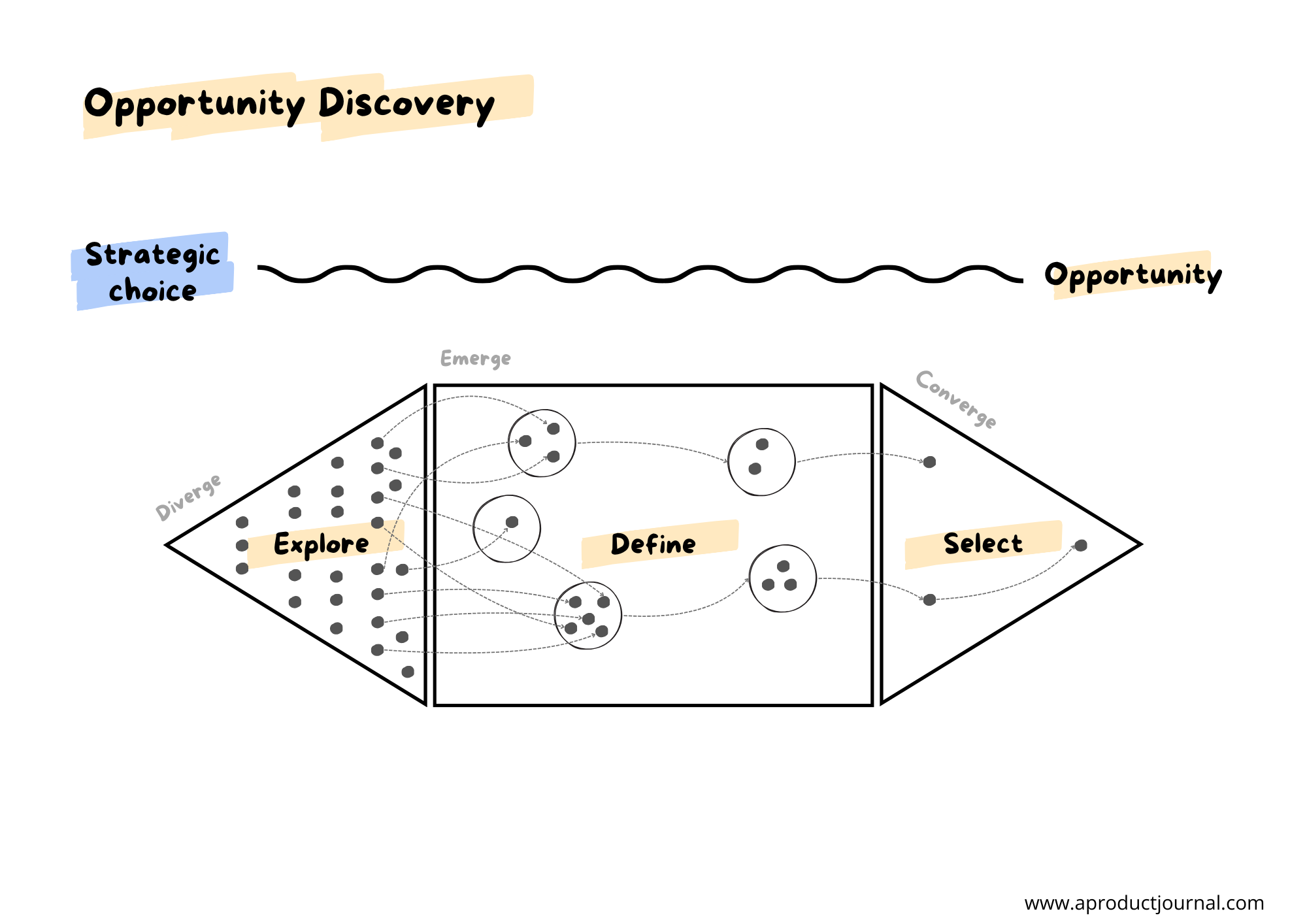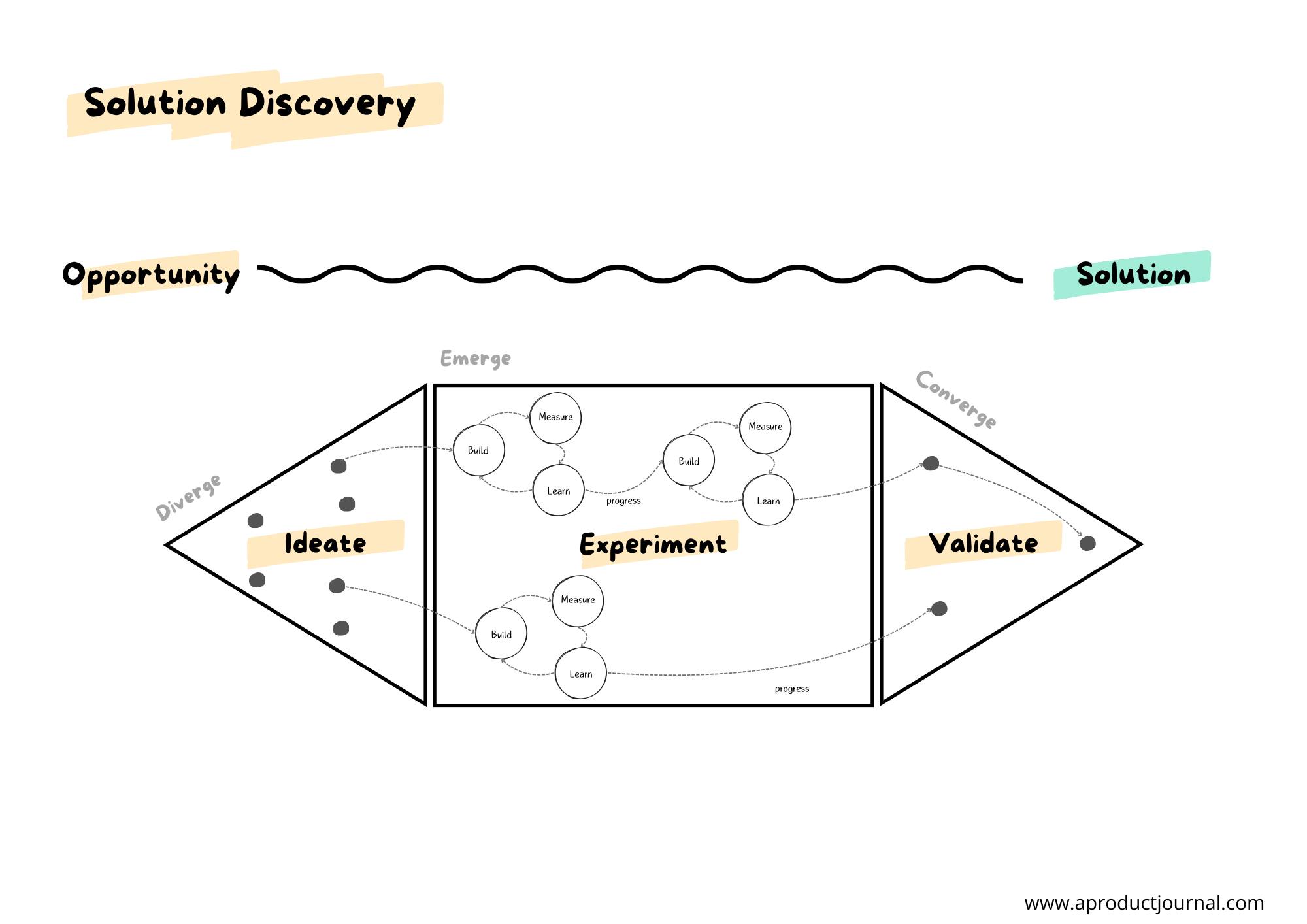🔎 Product Discovery
Build the right thing, and build this thing right
Table of Contents

By Tolgay B.
✏️ Description
Product Discovery is a key phase where teams identify and validate opportunities and solutions. This step is crucial to make sure the products we develop truly meet user needs and fit well with our business goals. In this phase, we focus on exploring two main areas: the Problem Space and the Solution Space. This exploration helps teams deeply understand what users expect and experience. The insights gathered during this phase help decide which product features to focus on. This leads to creating products that are not only impactful but also meaningful. As we move forward, we’ll explore the Problem Space and Opportunity Space in more detail, helping each version of our product better meet user needs, increase user satisfaction, and support our business success.
🔎 Opportunity Space
Opportunity Discovery is where we want to make sure we are building the right thing. This phase focuses on identifying the right problems to solve by exploring user needs, market gaps, and data insights. This phase ensures your product addresses real challenges and aligns with your strategy.
◀ Explore (Diverge): Gather diverse insights and ideas by researching user needs, analyzing data, and exploring market trends. This phase is about casting a wide net to uncover potential opportunities.
◼️ Define (Emerge): Synthesize findings to identify patterns, clarify key problems, and frame opportunities. This step bridges exploration and action, ensuring focus on the most promising areas.
▶ Select (Converge): Prioritize opportunities based on impact, feasibility, and alignment with your product strategy. Narrow down to the most valuable problems to address moving forward.

🔎 Solution Space
Solution Discovery is where we want to make sure we are building the thing right. This phase is about finding and validating the best solutions for identified opportunities. It ensures solutions are feasible, meet user needs, and deliver value through iteration and testing.
◀ Ideate (Diverge): This phase encourages broad thinking and the generation of many ideas or potential solutions. It captures the essence of creative exploration and problem-solving, where quantity is key before filtering down.
◼️ Experiment (Emerge): Here, you’re starting to shape and refine the ideas generated during ideation. Experimenting is critical in narrowing down the possibilities by testing and prototyping, allowing you to learn more about what works and what doesn’t.
▶ Validate (Converge): Finally, you’re validating the solutions that emerged from experimentation. This is where you solidify the most viable options and ensure they meet user needs and align with the broader product strategy.

+ Benefits
Building the right product: By deeply understanding user needs and validating assumptions, product discovery ensures you focus on solving real problems rather than wasting resources on features or products that don’t resonate with your audience.
Reducing riks: Early validation of ideas and solutions minimizes the risk of failure by identifying potential pitfalls, aligning with business goals, and ensuring feasibility before significant investment in development.
Foster alignment: Product discovery encourages cross-functional collaboration, bringing together diverse perspectives from stakeholders, designers, engineers, and users. This alignment results in more cohesive decision-making and a shared vision for success.
⚠️ Common Pitfalls
Rushing discovery: Failing to invest time in understanding user needs and gathering insights can lead to building products that solve the wrong problems or don’t resonate with the target audience.
Focusing on solution to early: Jumping to solutions without thoroughly exploring and validating the problem space can result in poorly aligned products that miss the mark on user and business value.
Overlooking stakeholder alignment: Overlooking collaboration with key stakeholders can cause misaligned priorities, conflicting goals, and resistance later in the development process, undermining the discovery efforts.
👉 Example
🎯 Strategic Choices and Objective Key Results (OKRs)
🎯 Strategic Choice #1: Build a premium listing experience
🏔️ Objective: Enhance user engagement with premium listings
🚩 Key Result: Improve the conversion rate for premium listings from inquiry to booking by 30% by the end of Q1.
🔎 Opportunity Discovery
- Conduct Surveys: Launch surveys targeting users who have interacted with premium listings in the past to understand their motivations and barriers.
- Host Focus Groups: Bring together diverse groups of users to discuss their experiences and expectations with premium listings.
- Perform Interviews: Conduct in-depth interviews with frequent users to dive deeper into their needs and satisfaction levels.
🔎 Opportunity Discovery
- Conduct Surveys: Launch surveys targeting users who have interacted with premium listings in the past to understand their motivations and barriers.
- Host Focus Groups: Bring together diverse groups of users to discuss their experiences and expectations with premium listings.
- Perform Interviews: Conduct in-depth interviews with frequent users to dive deeper into their needs and satisfaction levels.
🧰 Discovery Toolbox
📄 Surveys
Surveys collect feedback, reveal insights, easily and quickly.
🎤 Interviews
Interviews offer deep insights into audience experiences and needs.
👥 Focus Groups
Sessions where participants share collective insights, revealing diverse perspectives.
More to come soon
- User Shadowing
- Prototypes
- Wizard of Oz
- And so one…
COMING SOON
📚 More Resources
COMING SOON